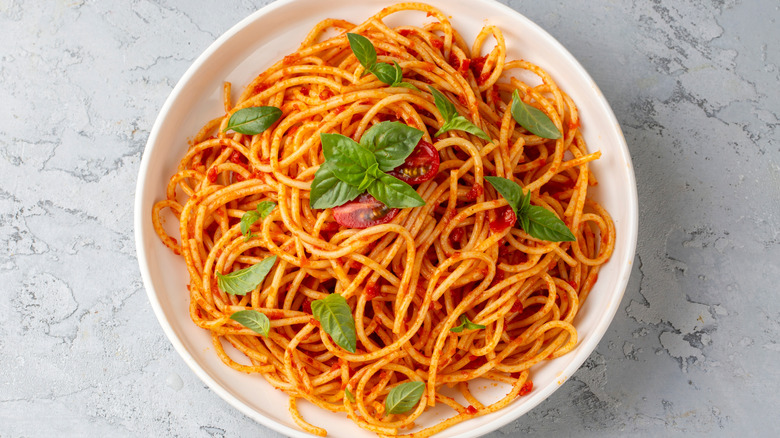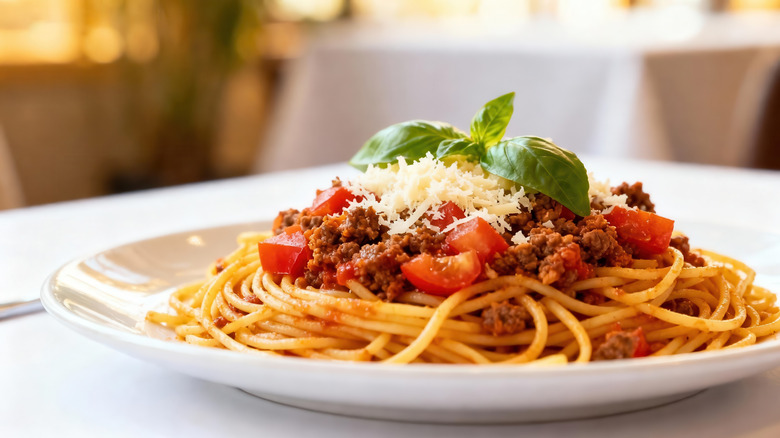This Italian Technique Is The Secret To Restaurant Quality Spaghetti At Home
A plate of homemade spaghetti can be a hearty meal with the perfect blend of easy, tasty, and satisfying. As good as homemade is, though, there's just something special about restaurant-quality spaghetti that's hard to beat. If you want your spaghetti to taste more like it just came from a gourmet restaurant's kitchen, all it could take is one Italian cooking technique.
Mantecatura, also known as mantecare, is the secret to delicious homemade spaghetti. It boils down (no pun intended) to cooking your spaghetti in its sauce for the end of the cooking time and bringing in a fat element like butter or olive oil. Butter is already a great way to upgrade your store-bought spaghetti sauce, but in a mantecare, it's a secret weapon that helps create restaurant-quality pasta. When done right, this makes the final dish creamy and delicious, bringing new life to even watery store-bought spaghetti sauce. It can seem complicated at first, but once you've got the mantecatura process down, it's easy to craft a plate of quality spaghetti that will make your taste buds come alive.
Of course, mantecatura isn't just for spaghetti. It's also a fundamental step when making risotto, so if you can never seem to get risotto just right, this is likely the missing link. The name comes from mantequilla, the Spanish word for butter, but the technique as it's known today is entirely Italian.
How to perform the perfect mantecatura
To perform mantecare correctly, drain the noodles when your pasta is almost done. However, do not pour out the pasta water or make the crucial mistake of rinsing your pasta – you want to keep some starch on the noodles! Continue cooking the pasta in your chosen sauce and add approximately a cup of the water back in, slowly adding a bit at a time. The starch in the water helps thicken the sauce and will make it nice and creamy. Meanwhile, cooking pasta in the sauce allows the flavors to penetrate the noodles.
Once your pasta has cooked in the sauce and pasta water for a few minutes, remove it from heat and add some form of fat. Olive oil, butter, and cheese are all classic options with different effects. Generally speaking, oil will intensify the natural flavors of the sauce and pasta, while butter and cheese add a nice sweetness and umami flavor to the dish (naturally, that depends on the sort of butter or cheese you use). Avoid pre-grated cheese since it often contains cellulose, which specifically prevents emulsification.
The final step is to mix everything together. Put your pasta and sauce back on the heat and stir constantly for a couple of minutes to let everything combine and create the smooth, silky texture of your dreams. Once all of your ingredients have mixed nicely, it's ready to serve.

